Satellite is a heavenly body that orbits a larger body, such as a planet or asteroid. A satellite can be a natural object, like Earth’s moon, or it can be an artificial craft launched into orbit by rocket. Because Earth’s moon was the first known satellite, it has become common to refer to a natural satellite of a planet or asteroid as a moon. This article is about natural satellites. For information on artificial satellites, see Satellite, Artificial.
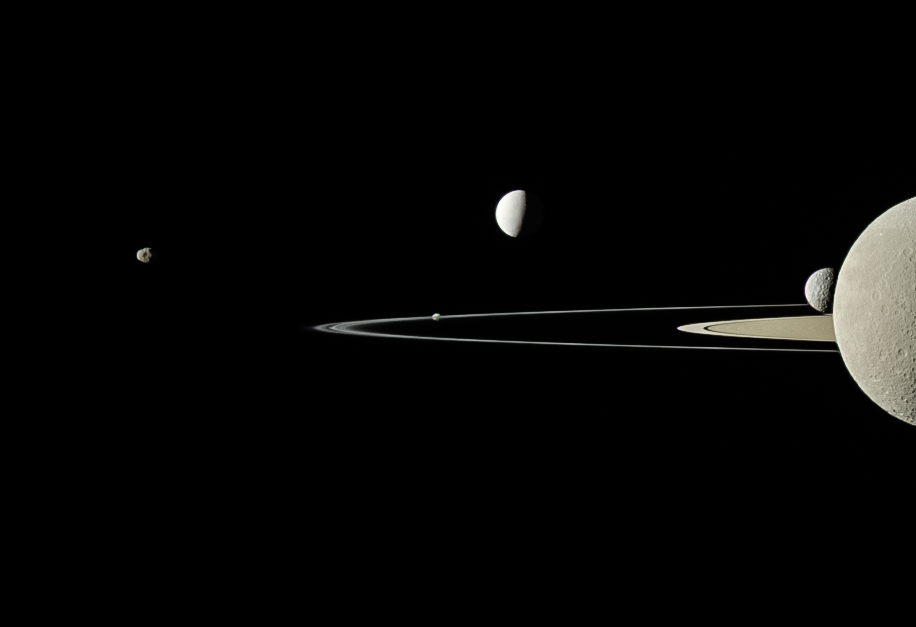
In our solar system, the planets Mercury and Venus have no known natural satellites. Earth has one natural satellite—the moon—and Mars has two satellites. A wealth of satellites orbits each of the gas giant planets—Jupiter, Saturn, Uranus, and Neptune. These satellites can be separated into two main categories—regular and irregular. Regular satellites orbit close to the planet and travel in nearly circular, almost untilted paths. Irregular satellites orbit farther out and may have orbital paths that are greatly elongated (oval-shaped), tilted, or both. Observers have also discovered satellites around asteroids and Kuiper belt objects (KBO’s), icy bodies beyond the orbit of Neptune.
Many of the large, regular satellites in the solar system formed in place around the objects they orbit. However, many of the smaller, irregular ones formed independently. These bodies became satellites when they were captured by the gravitational pull of a planet or other body. At least one large satellite, Neptune’s moon Triton, may have also been captured in this way.
Moons attract great scientific interest. Researchers looking for extraterrestrial life (life beyond Earth), for example, have identified several moons that almost certainly hold liquid water. These moons rank among the more likely places to find life in the solar system.
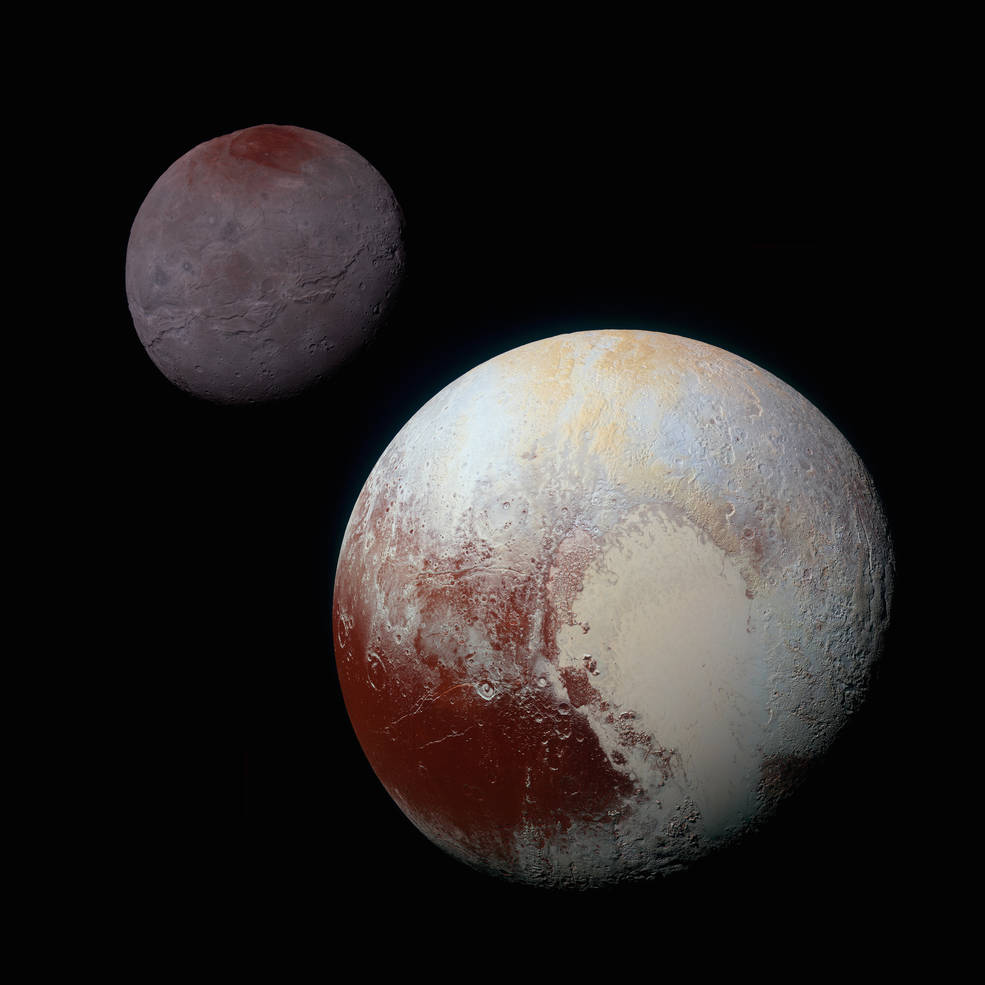
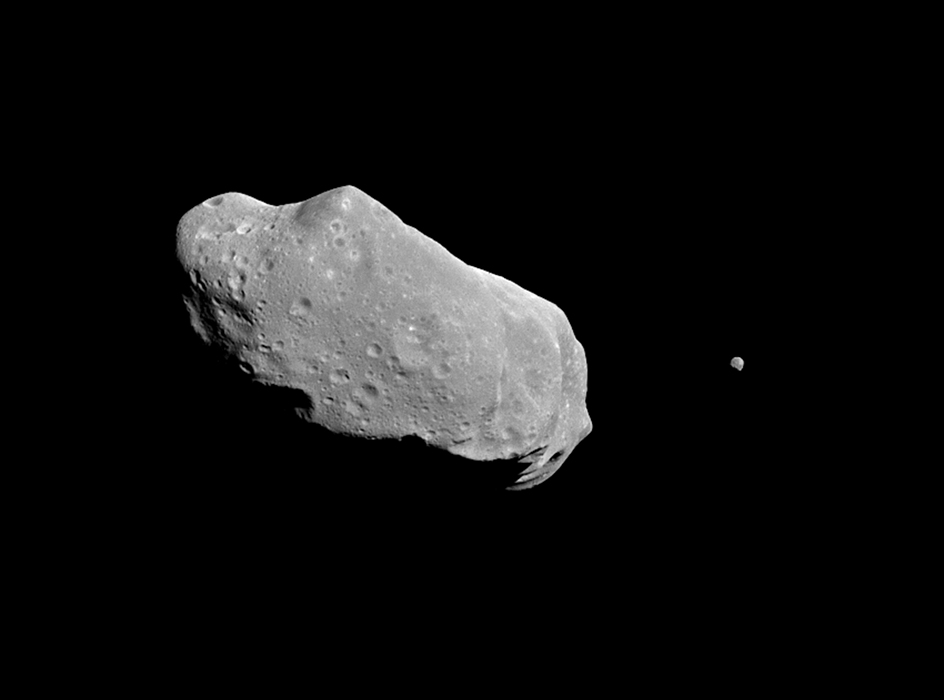
Physical characteristics
The specific composition of a satellite varies by many factors, such as whether it is regular or irregular, its history of volcanic eruptions or other geological activity, and its distance from the sun. Earth’s moon, Mars’s two satellites, and the satellites of the asteroids in the Main Belt (between the orbits of Mars and Jupiter) all consist mostly of rocks called silicates. The same material makes up most of Earth’s crust. Most of the regular satellites of the giant planets consist of ices as well as silicates.
Most satellites are heavily cratered. Most of the craters were created billions of years ago, when the solar system still contained much leftover material from its formation. Such craters can be smoothed over by volcanic eruptions and other geological activity. But many of the satellites have not been geologically active for the age of the solar system. They thus retain impact craters, circular depressions caused by collisions with other bodies, dating from the origin of the solar system.
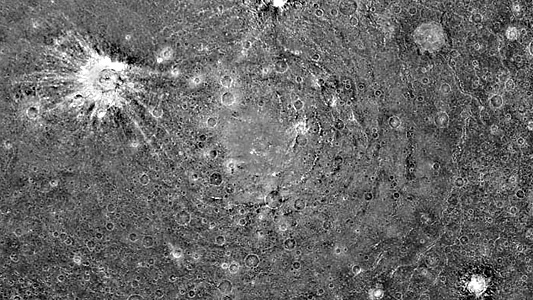
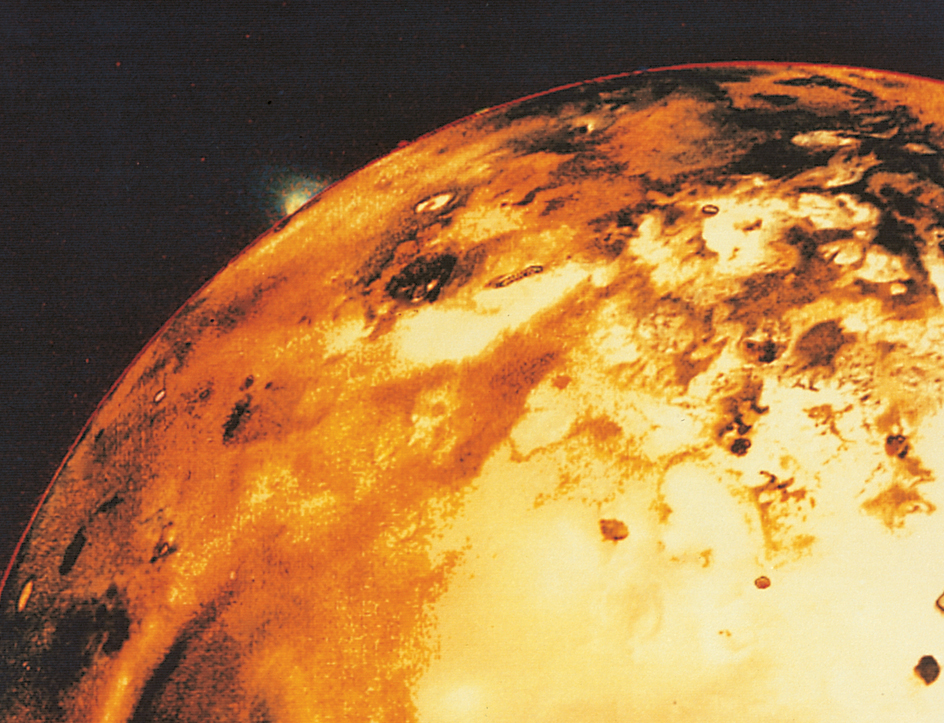
A few satellites, however, currently undergo significant geological activity. Jupiter’s satellite Io has several active volcanoes. Space probes have detected erupting geysers on Saturn’s moon Enceladus and Neptune’s moon Triton.
Scientific observation has found a wealth of evidence that Europa, a moon of Jupiter, has an ocean of liquid water beneath its icy surface, creating speculation that life could exist there. The geyser sprays on Enceladus are presumed to originate from a similar subsurface (underground) ocean or lake. Subsurface oceans are probably also present on Jupiter’s moons Callisto and Ganymede, and on Saturn’s moon Titan.
All the large regular satellites of the giant planets are tidally locked, as are Earth’s moon, Mars’s moons, and Pluto’s largest moon, Charon. This means that one side of the moon faces the planet throughout the moon’s orbit. Tidal locking occurs because the planet’s gravitational pull creates strains within the satellite called tidal forces. Over time, tidal forces slow the satellite’s rotation with respect to the planet, until such rotation ceases. See Tidal forces.
At least three satellites—Europa, Enceladus, and Titan—have conditions intriguing in the search for extraterrestrial life. Europa and Enceladus have liquid water. Titan has a dense atmosphere and plentiful hydrocarbons, carbon-based molecules similar to those found in living things.
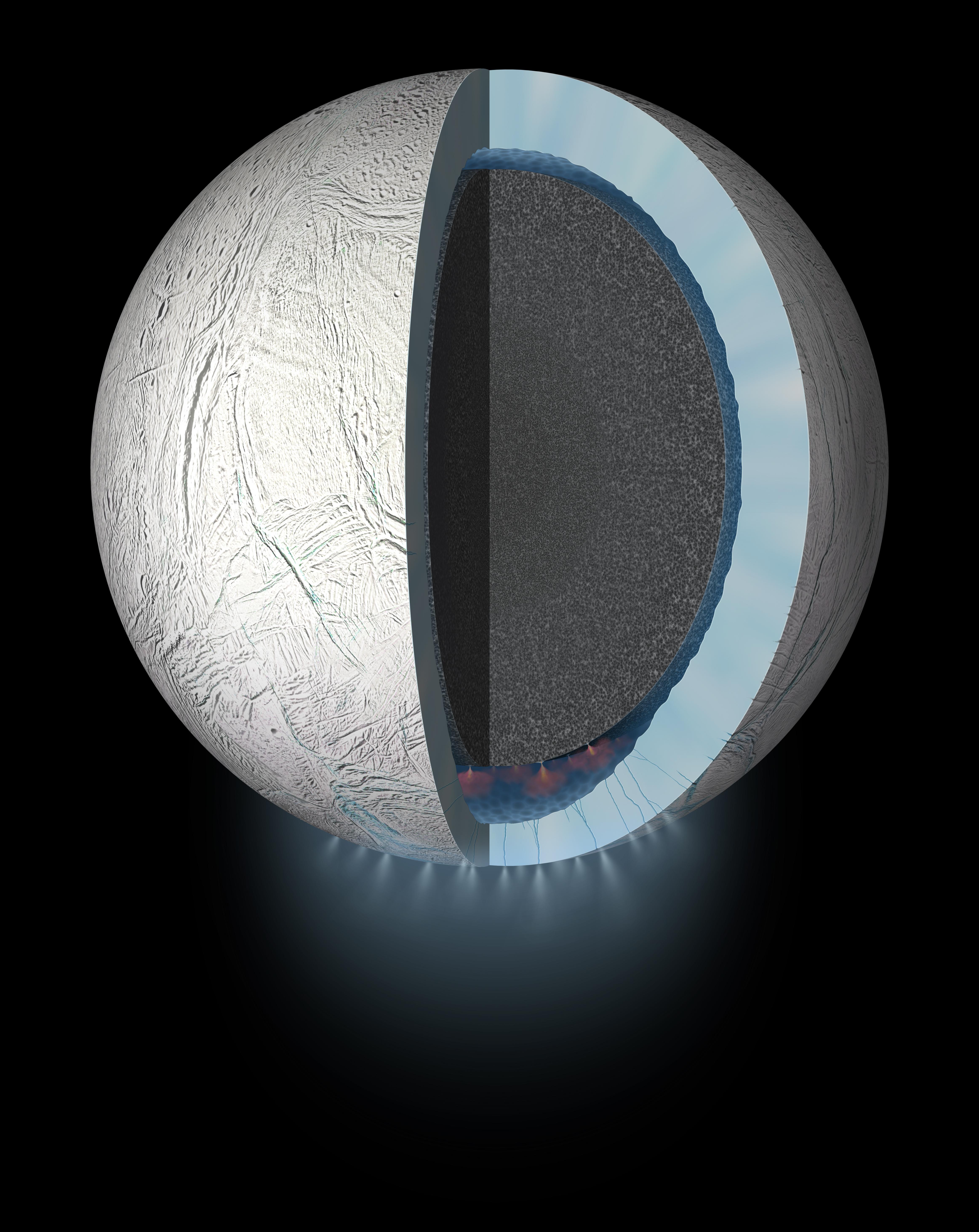
Formation
Most satellites formed at about the same time and in the same way as the planets. Almost 5 billion years ago, a disk-shaped cloud of gas and dust particles spun slowly in space. Particles collided and stuck together, forming small chunks. The chunks collided to form bigger and bigger objects. As such an object grew, its gravitational pull became stronger. The stronger pull drew in more material, speeding the object’s build-up. Eventually, most of the material had been pulled into a relatively small number of large objects. An object in the center of the cloud pulled in most of the material, becoming the sun. Objects farther out became asteroids, comets, planets, and moons. This process of small pieces coming together to form larger objects is called accretion.
As the planets accreted, dust and gas swirled around them, accreting to form the regular satellites. The irregular satellites accreted elsewhere in the solar system or formed in collisions that broke apart larger objects.
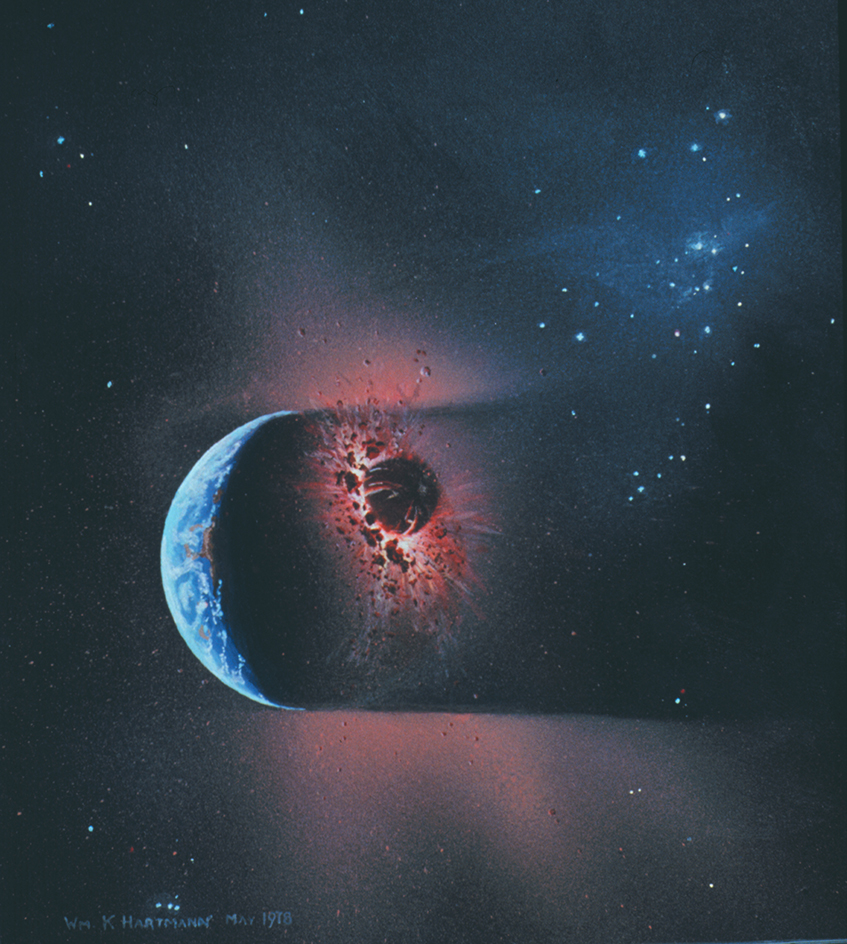
Although the compositions of the satellites vary, most of the larger ones formed in a similar way. The collisions involved in accretion also heated the accreting satellites. As material gathered on the surface of the satellite, heat was trapped inside. Tidal interactions with other planets or satellites may have also contributed to internal heating. In addition, unstable atoms called radioactive isotopes produced radiation within the body, increasing its internal heat. Gradually, the extreme heat inside the satellite melted its interior. The densest materials, such as metals and other heavy elements, sank into the center of the satellite, becoming its core. Lighter materials, such as carbon and silicon, rose to the surface. Gases escaped from the interior into space. Two satellites, Titan and Triton, managed to hold onto these gases, forming atmospheres. Other satellites probably had significant atmospheres early in the history of the solar system. But their gravitational pulls were too weak to prevent the eventual loss of these gases. 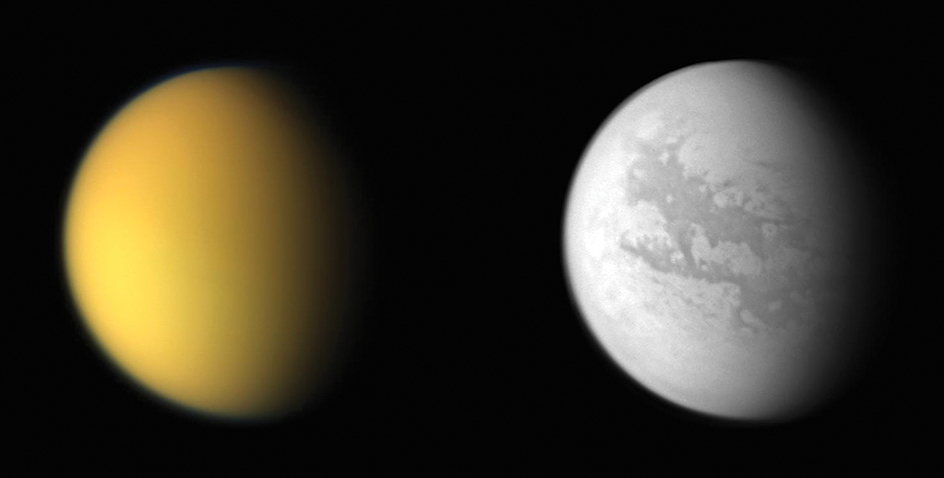
Collisions with smaller objects created impact craters of all sizes on the satellites, leaving rough areas on their surfaces. On some satellites, melted material from the interior broke through the surface in volcanic eruptions. These eruptions covered some cratered areas, leaving them smooth. Over time, such smoothed areas will again become cratered by impacts. Thus, scientists know that the fewer craters in such an area, the more recently geological activity has occurred there.
Changes in composition and temperature inside a new satellite can cause the satellite to expand or contract. These changes caused violent ruptures in the crust (outer layer) of the satellites, creating mountains, steep valleys, and other geographic features. In areas where internal forces pulled the surface apart, the ground broke in long, straight parallel faults (cracks).
Satellites of the terrestrial planets
The terrestrial planets—Mercury, Venus, Earth, and Mars—have only three satellites among them. Mercury and Venus have no known satellites. Their nearness to the sun’s strong gravitational pull makes most orbits around them unstable.
Earth has only one natural satellite, the moon. The Earth-moon system has a large angular momentum (energy of rotation). Earth and the moon also share a similar composition. For these reasons, along with other evidence, scientists believe that the moon formed when a Mars-sized object collided with Earth. This collision would have thrown material into orbit around Earth that could then re-form as the moon. The moon ranks as one of the largest known satellites in the solar system.
Mars has two small satellites, Phobos and Deimos. Both moons are relatively close to Mars. Their orbits are nearly circular and only slightly tilted with respect to the planet’s orbit. These characteristics hint that they formed in their present locations at the same time Mars took shape. However, it is also possible that they formed nearby as asteroids, and were captured by Mars’s gravity.
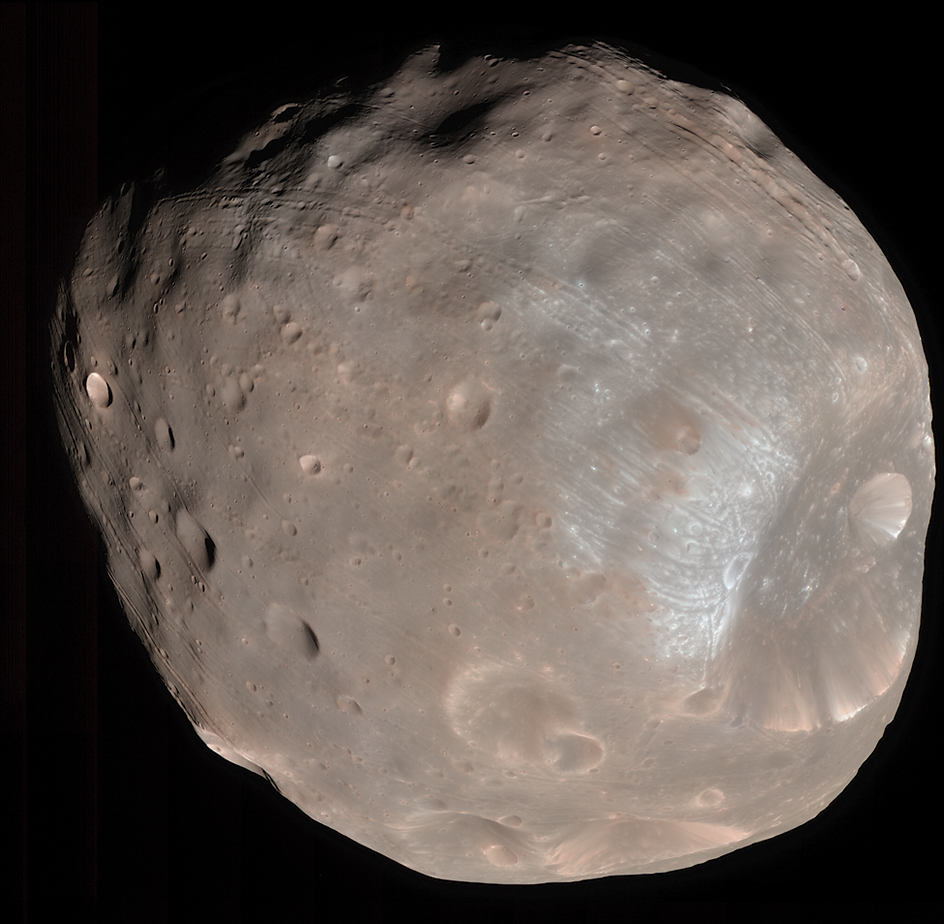
Satellites of the gas giants
Compared with the terrestrial planets, Jupiter, Saturn, Uranus, and Neptune each have a wealth of known satellites. In fact, many of the most notable moons in the solar system orbit the gas giant planets.
Types of satellites.
Each gas giant has both regular and irregular satellites. The two groups can be distinguished by their orbits.
Regular satellites
remain relatively close to the planet. They have nearly circular orbits, with little tilt relative to the orbit of the planet. The regular satellites orbit the planet near its equator, in the same direction that the planet rotates. These satellites are thought to have formed in place, through the accretion of gas and dust swirling around the planet during its formation.
The regular satellites can be further divided into two types: classical regulars and collisional shards. The classical regulars are larger than the collisional shards.
Classical regulars, unlike many collisional shards, are usually massive enough to take on nearly spherical shapes under their own gravitational pull. They generally have evenly spaced orbits in relation to one another. This category includes the four largest satellites of Jupiter—Callisto, Europa, Ganymede, and Io—as well as others around Saturn, Uranus, and Neptune.
Collisional shards are relatively small. They are believed to be the remains of larger satellites that have been shattered by collisions or tidally disrupted (broken apart by tidal forces). These shards are usually relatively near the planet, where tidal forces are strongest and the possibility of collisions between satellites is high. Many collisional shards are associated with planetary rings.
Irregular satellites
are found far from their respective planets. They have orbits that are eccentric (oblong), highly inclined (tilted) to the orbit of the planet, or both. Many of the irregular satellites orbit in the opposite direction of the planet’s rotation. The irregular satellites cannot have formed in their current orbits. They are likely captured objects, such as asteroids or comets. Most known irregular satellites measure less than about 120 miles (200 kilometers) in diameter. One notable exception is Neptune’s Triton, which is larger than Pluto.
Major satellites.
Nearly all the notable moons of the gas giants are regular satellites. Exceptions include Saturn’s Phoebe and Neptune’s Triton.
Io
, Jupiter’s closest large satellite, is the most geologically active body in the solar system. Volcanoes send clouds of dust up to 300 miles (500 kilometers) above its surface. Constant eruptions create so much new terrain that Io’s surface is covered in lava flows, mountains, and pits rather than craters. The cause of Io’s volcanic activity is tidal interactions with Jupiter and with the planet’s other large satellites. The gravitational pulls of these objects squeeze Io’s interior in different directions, generating immense heat by a process known as tidal heating. Io consists of silicate rock surrounding a large iron core. Its surface is an array of colors due to sulfur and sulfur compounds deposited by volcanic eruptions. See Io.
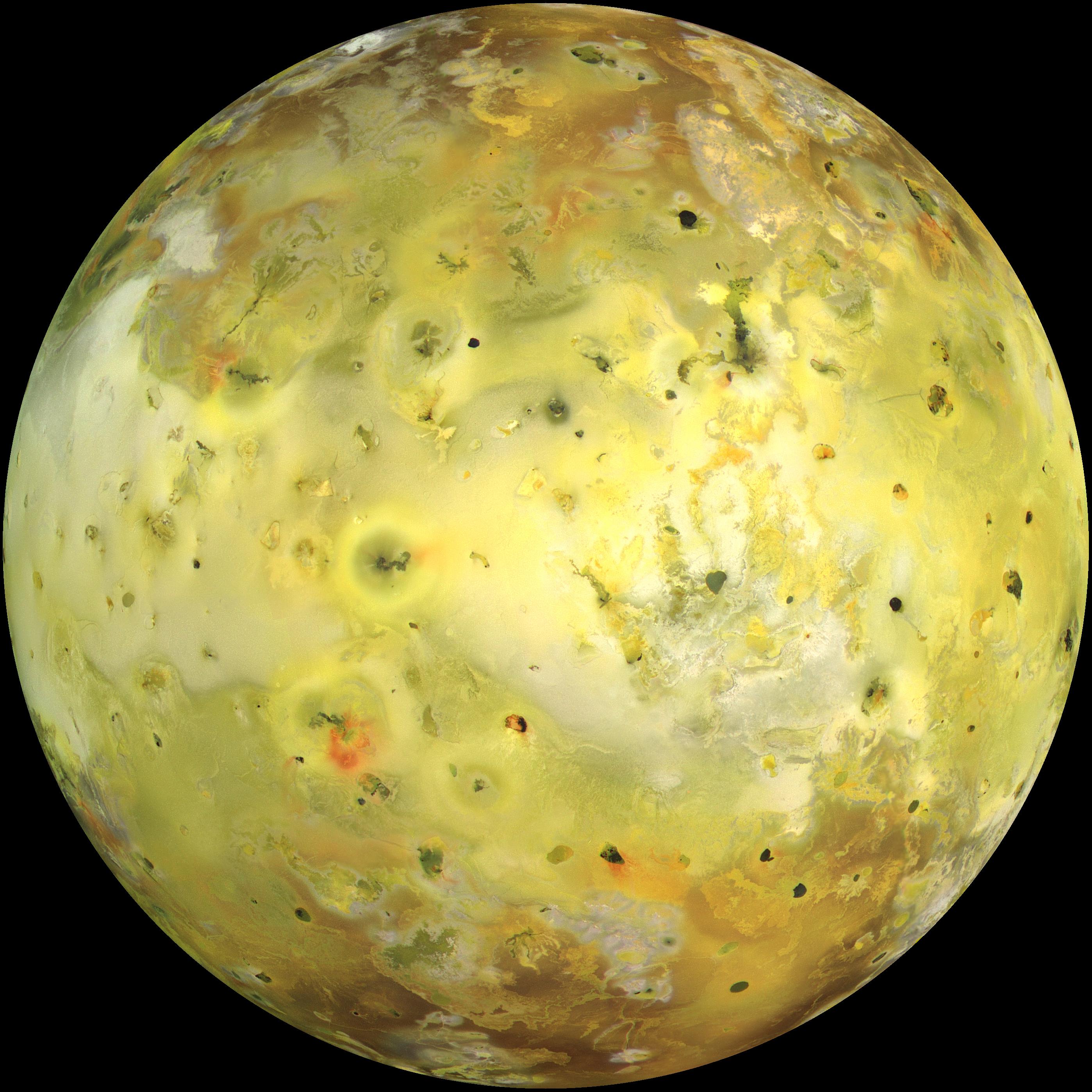
Europa
, which orbits Jupiter just beyond Io, has a flat surface with many cracks and few craters. Europa consists of silicate rock covered with a shell of water ice. Between the rock and ice, there is almost certainly an ocean of water that has been kept liquid by tidal heating. The ocean’s existence has not been directly proven, because no spacecraft capable of gathering direct proof has approached the moon closely enough. But the indirect evidence for such an ocean is strong. For example, observations of Europa’s ice crust suggest the ice is floating on a layer of liquid. See Europa.

Ganymede
, which orbits Jupiter, ranks as the largest satellite in the solar system. At 3,270 miles (5,262 kilometers) in diameter, it is larger than Mercury and Pluto. It has a rocky, metallic core and a surface of dirty ice. It may have an ocean of water beneath the surface. About half of the surface has been smoothed over by eruptions of relatively bright material. This material flowed into a global network of valleys, creating bright lanes. The regions between lanes are older, darker, and more heavily cratered. Almost all of the brighter material is wrinkled in a pattern known as grooved terrain. Scientists believe that the stretching of Ganymede’s crust created the network of wrinkles. See Ganymede.
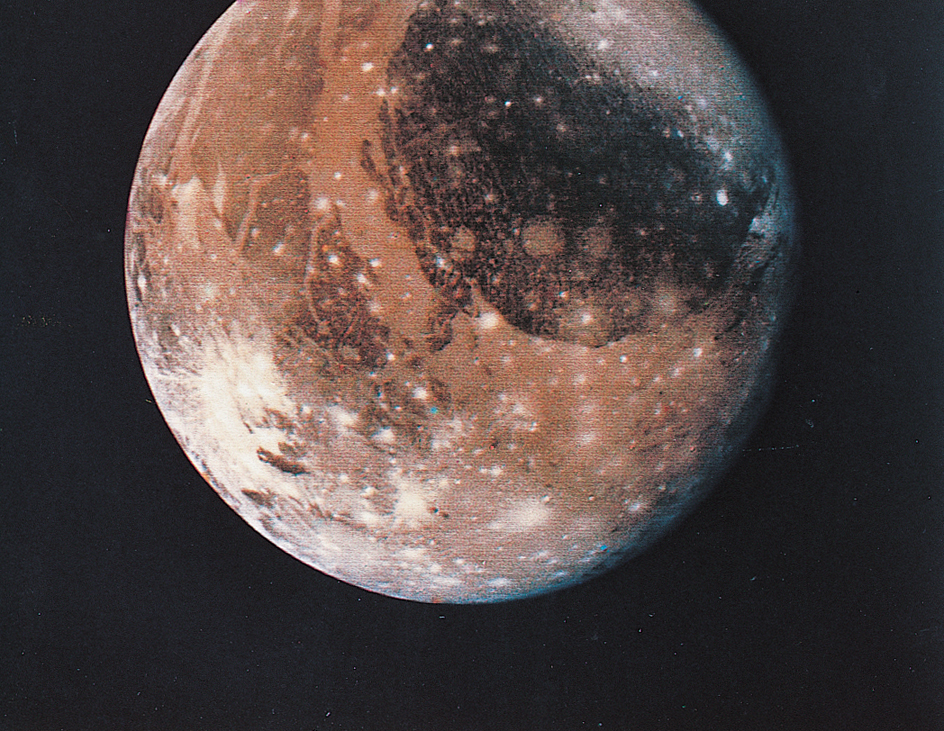
Callisto
, the farthest from Jupiter of the planet’s four largest satellites, resembles Ganymede in size and composition. But Callisto’s surface is almost completely covered by craters. Scientists suspect that the two satellites differ because Ganymede was once heated tidally, while Callisto was not. The heating produced the eruptions and other activity that altered Ganymede’s surface, erasing many craters. Like Ganymede, Callisto may have an ocean of salty water beneath its surface. Most of Callisto’s craters are from 6 to 20 miles (10 to 35 kilometers) across. The largest crater basin, known as Valhalla, is about 620 miles (1,000 kilometers) in diameter. About 20 rings extend outward from the crater. The outermost ring has a diameter of about 1,900 miles (3,000 kilometers). A collision with a huge meteorite made the basin, and the rings formed as ripples after the impact. See Callisto.
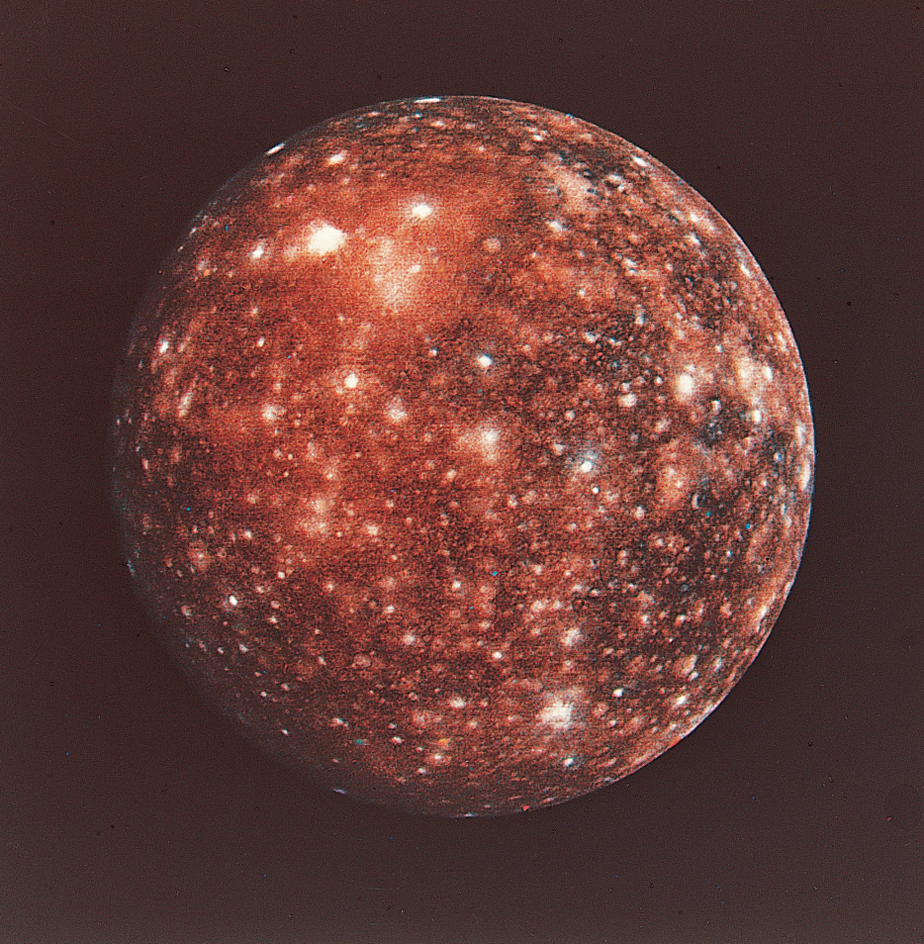
Titan
, a moon of Saturn, ranks as the second largest satellite in the solar system. Its geological history is hard to determine because Titan’s thick atmosphere prevents scientific instruments from easily studying its surface. Titan’s atmosphere consists mostly of nitrogen. It has an orange-brown haze that is chemically similar to smog on Earth. Despite the haze, images produced with radar have revealed evidence of cryovolcanism (eruptions of cold material) on Titan. The Cassini spacecraft took images of ethane and methane lakes on Titan. This discovery makes Titan only the second body, after Earth, found to have liquid on its surface. Observations by scientists over several years have revealed that these lakes and seas change in size. Titan is also likely to have some form of ethane and methane rain. In addition, Cassini detected evidence of an ocean of liquid water deep beneath Titan’s surface. See Titan.
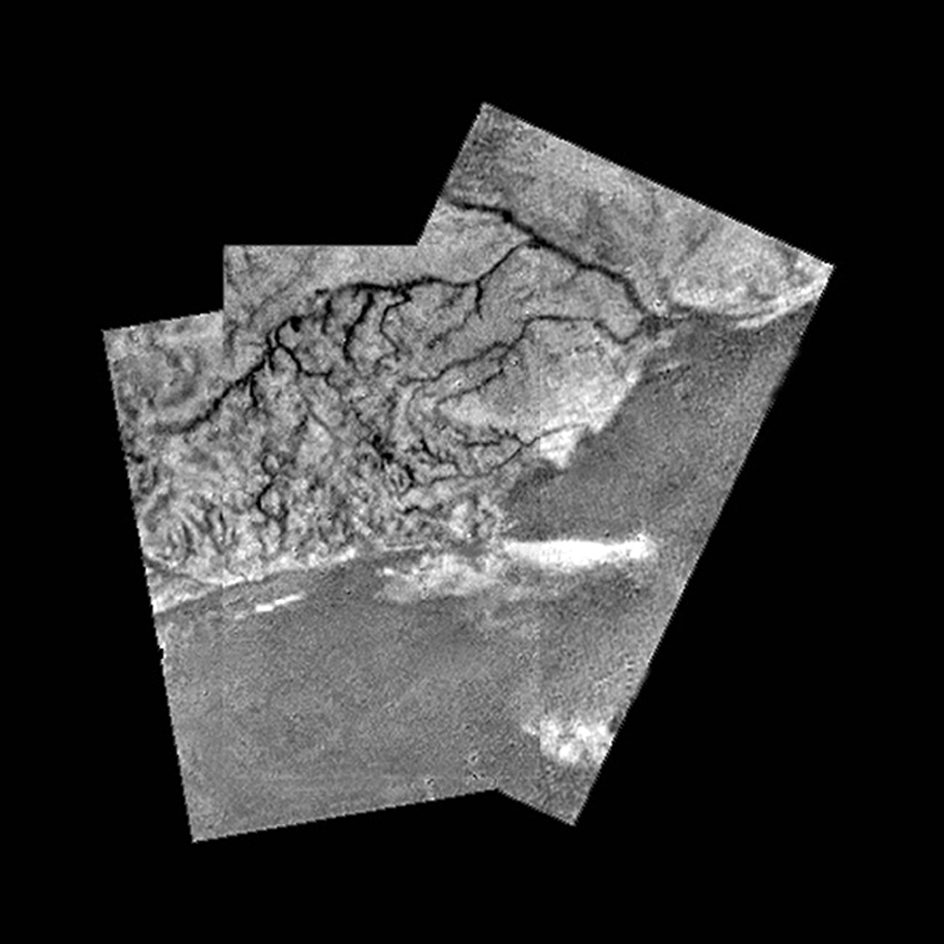
Enceladus
, a satellite of Saturn, has one of the most reflective surfaces in the solar system. Enceladus’s surface reflects nearly all the sunlight that strikes it. Small craters cover some regions, but craterless plains with ridges extend over other areas. The plains probably formed when water-containing material erupted from the satellite’s surface and then froze.
Enceladus continues to erupt plumes of icy material from its south polar region. These eruptions feed material into Saturn’s outermost ring, the E ring. Enceladus is only 313 miles (504 kilometers) in diameter. Because it is small and far from the sun, scientists expected to find that Enceladus had cooled and become geologically inactive soon after formation. Its surprising continued activity may result from tidal heating or the decay of radioactive isotopes. The chemistry of the interior may also contribute. For example, if ammonia were present in the interior, water that might normally freeze would remain liquid. See Enceladus.
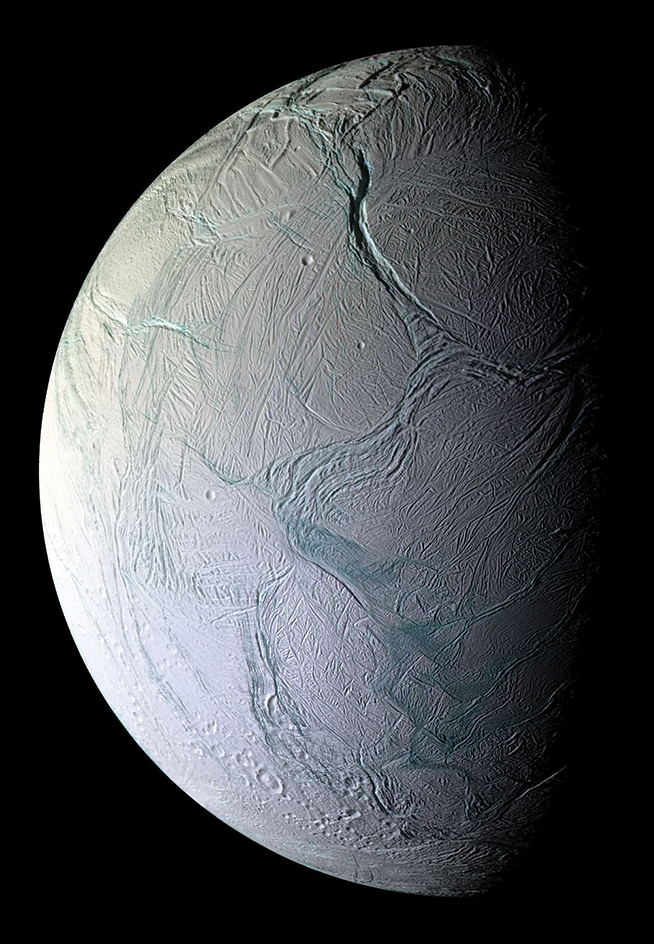
Iapetus
is a heavily cratered satellite of Saturn. It is unusual because half its surface is as dark as charcoal and the other half is as bright as dirty snow. Iapetus is tidally locked to Saturn, so the same half always faces forward in its orbit—the dark half. Scientists are still not sure why the two halves appear so different. See Iapetus.
Phoebe
is the largest irregular satellite of Saturn, with an average diameter of about 132 miles (213 kilometers). In 2004, the Cassini spacecraft flew to within about 1,200 miles (2,000 kilometers) of Phoebe. Cassini images showed Phoebe to have an oblong shape and to be heavily cratered, with patches of bright material near crater walls. The data showed that Phoebe contains much water ice and other icy compounds. Some scientists think that Phoebe is a captured Kuiper belt object.
Mimas
, a satellite of Saturn, is one of the smallest known objects with a strong enough gravity to pull it into a sphere. Mimas’s low density and round shape indicate that it is composed almost entirely of water ice. Among all the satellites, Mimas has one of the largest impact craters relative to its size. The Herschel crater stretches about a third of the moon’s diameter. The crater is about 6 miles (10 kilometers) deep in parts. The impact that created this crater nearly broke Mimas apart.
The middle-sized icy satellites of Saturn and Uranus
have rocky cores covered with ice. Saturn’s Dione and Tethys and Uranus’s Ariel, Miranda, and Titania show geological activity within the last 2 billion to 3 billion years. Parts of their surfaces have vast flows of ice broken by long grooves. The grooves probably resulted from the stretching of their crusts. The geological activity may have been driven by heat from the radioactive decay of interior material or from tidal heating. Both Miranda and Ariel have regions of grooved terrain resembling that of Ganymede. Miranda, in particular, has large contrasts in terrain, indicating a significant amount of past geological activity. Miranda was likely tidally heated by Uranus and its other large satellites.
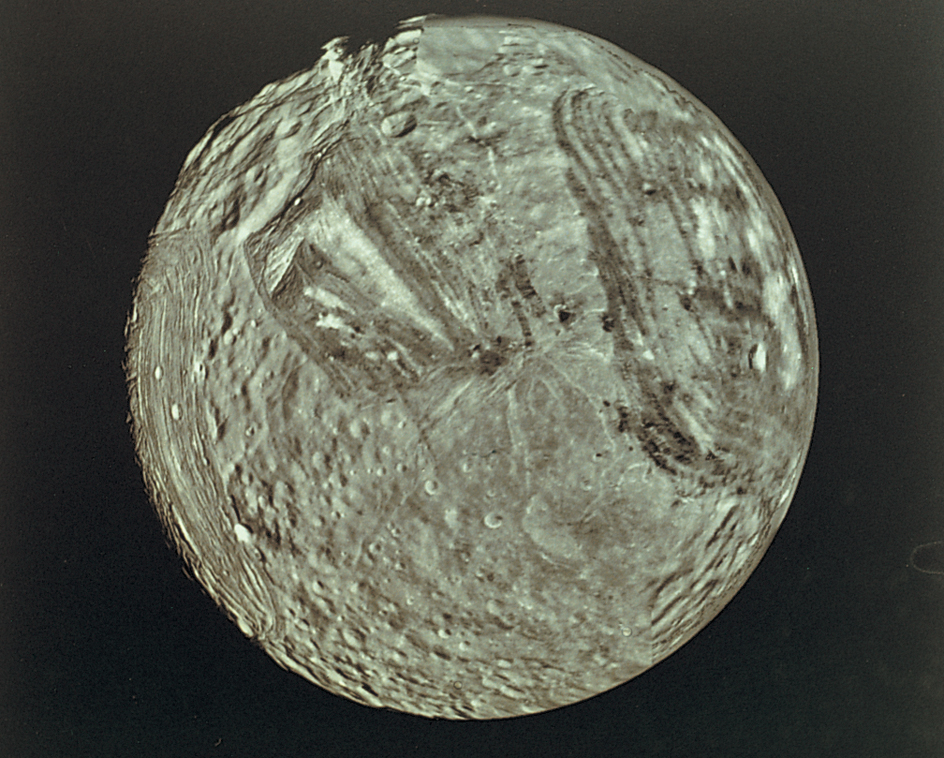
Triton
, the largest satellite of Neptune, is an irregular satellite and one of the coldest known satellites in the solar system. Its surface temperature is about –390 °F (–235 °C). This moon is thought to be about 70 percent metal and rock, and 30 percent ice, similar in composition to Pluto. Its core is metal and silicate rock, and its surface consists of ices of carbon dioxide, carbon monoxide, methane, nitrogen, and water. Geysers of boiling nitrogen break the ice, erupting several miles or kilometers into the air. Triton has a thin nitrogen atmosphere. Strong winds in the atmosphere carry small, dark particles away from the geysers, streaking Triton’s surface.
Triton is thought to have formed much as Pluto did before being captured by Neptune’s gravity. Triton orbits in the opposite direction from most relatively large objects in the solar system. This odd orbit may result from the capture. During capture, Neptune’s gravitational pull also would have created tidal heating inside Triton. The satellite’s interior would melt, triggering geological activity that continues today. See Triton.
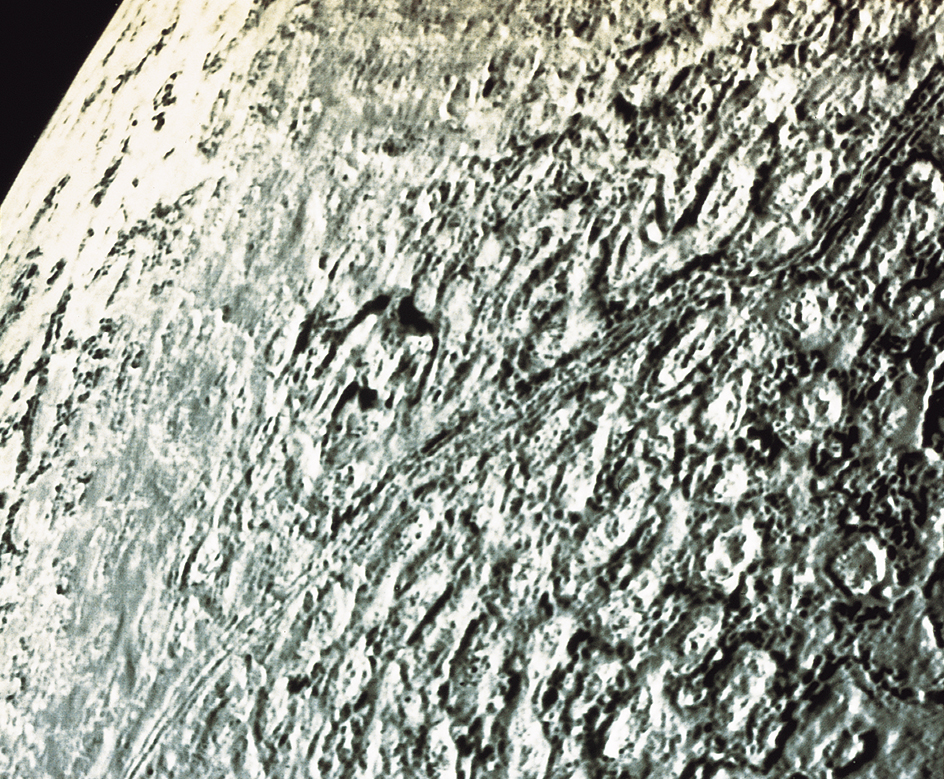
Nereid
is an unusual satellite of Neptune. Nereid is usually considered an irregular satellite because it has the most eccentric orbit of any known planetary satellite. However, its low tilt and relatively small distance from Neptune indicate that Nereid may have once been a regular satellite of Neptune. If so, Nereid’s once-regular orbit may have been disturbed by the capture of Triton.
Nonplanetary satellites
The Main Belt of asteroids and the Kuiper belt each have a large population of objects with varied orbits about the sun. These objects can collide among themselves, producing fragments that can become satellites. The most famous KBO, the dwarf planet Pluto, has at least four known satellites. The dwarf planet Haumea and the Main Belt asteroid Ida also have satellites.
Charon, the largest satellite of Pluto, has a diameter of about 750 miles (1,207 kilometers), about half that of Pluto. Because Charon is relatively large compared with Pluto, the two are sometimes referred to as a binary system (system of two objects with similar masses). Both Pluto and Charon are tidally locked to each other.

Exploration by spacecraft
Spacecraft have flown to many of the satellites in the solar system. Since the 1950’s, many missions have visited Earth’s moon. These missions include orbiters, landers, moving robots called rovers, and the crewed Apollo missions of the 1960’s and 1970’s, in which astronauts walked on the moon’s surface. In 2013, China’s Chang’e program sent the first rovers to the moon since the 1970’s. Several space agencies hope to send astronauts to the moon in the 2020’s.
Several spacecraft have captured close-up images of the moons of Mars. These probes include Mariner and Viking missions in the 1970’s and the United Arab Emirates’ Hope orbiter in the 2020’s.

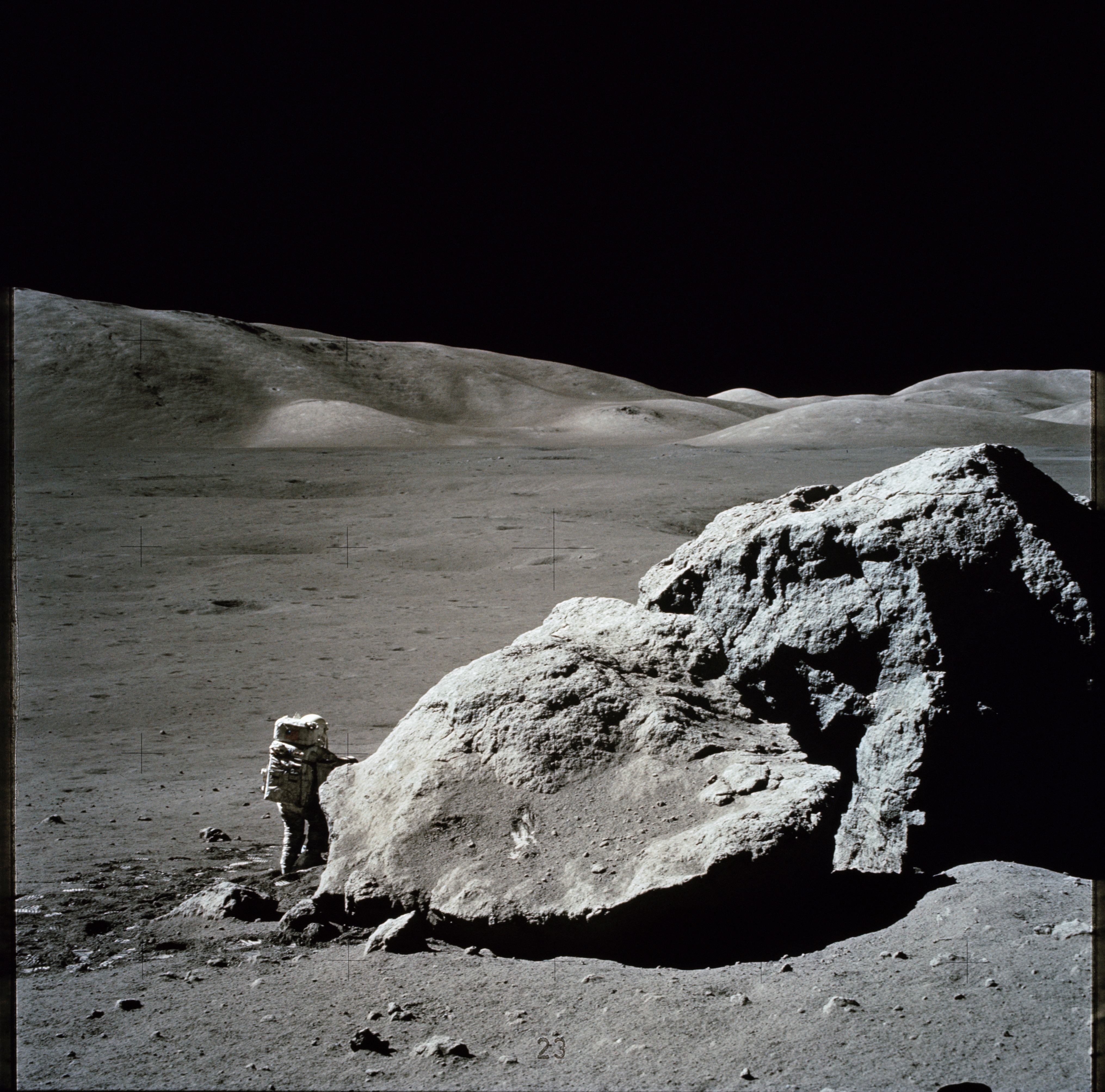
Few spacecraft have visited satellites in the most distant parts of the solar system. Voyager 2 visited the moons of Uranus in 1986 and of Neptune in 1989. The New Horizons spacecraft, launched in 2006, studied Charon during a flyby of Pluto in 2015.
The moons of Jupiter and Saturn have been extensively surveyed by spacecraft. NASA’s Pioneer spacecraft studied moons of Jupiter and Saturn in the 1970’s. Both Voyager spacecraft—Voyager 1 and Voyager 2—gathered data on the satellites of Jupiter and Saturn from 1979 to 1981. The Galileo spacecraft orbited Jupiter from 1995 to 2003, studying the planet as well as its moons. On the way to Jupiter, Galileo also photographed Dactyl, a tiny satellite of the asteroid Ida.
The moons of Saturn have been most extensively explored by the Cassini spacecraft, which observed Saturn and its moons from 2004 to 2017. Cassini also dropped a probe called Huygens that landed on Titan in 2005, the first such landing on a moon besides Earth’s.
The Juno spacecraft, which arrived at Jupiter in 2016, continues to study the planet and its satellites. In 2021, Juno’s mission was extended to include further study of Jupiter’s moons. 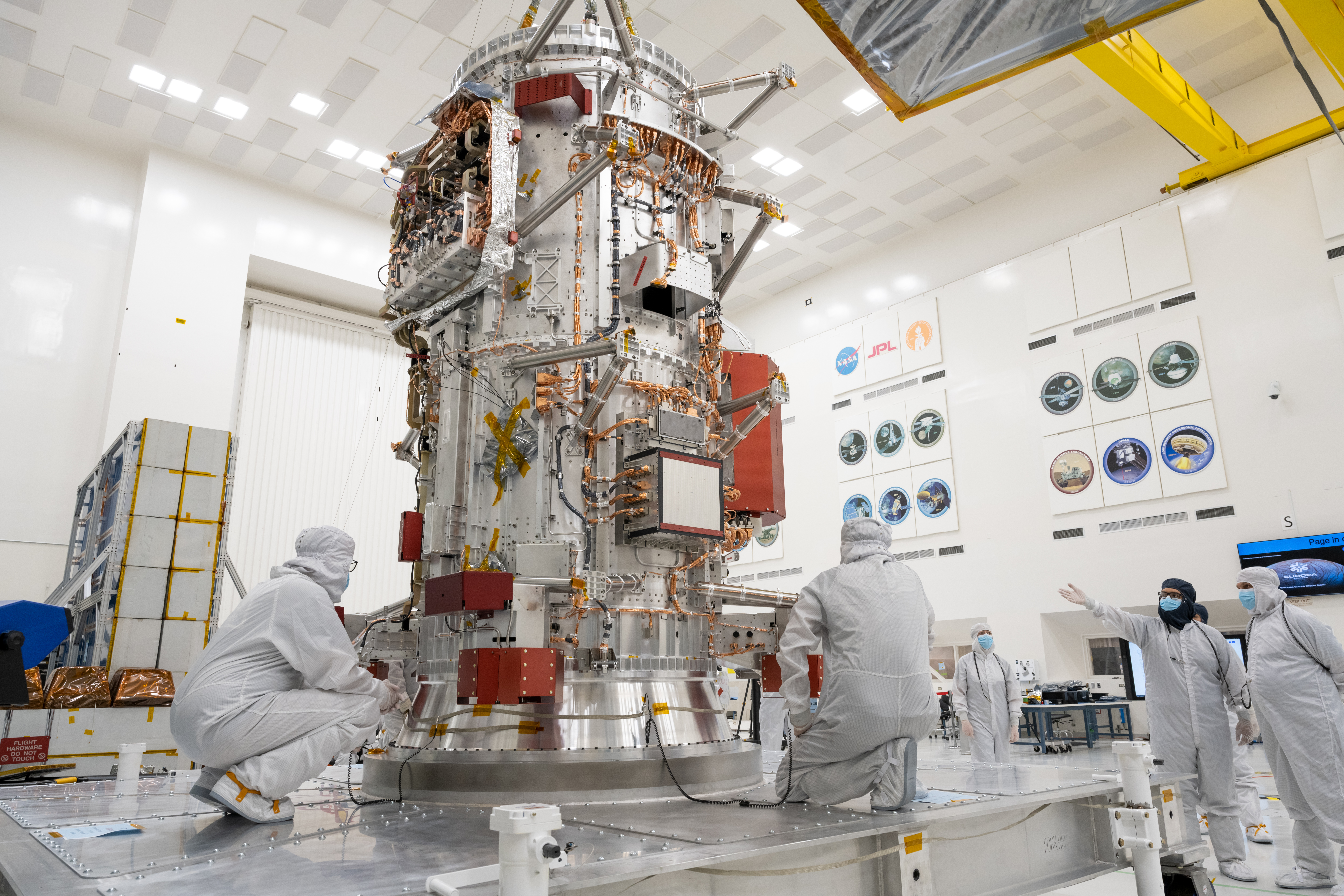
Space agencies plan to explore several satellites more closely, especially those thought to have liquid water. Spacecraft are expected to visit Ganymede, Callisto, Europa, and possibly Titan in the 2030’s. A future mission may attempt to collect a sample from Phobos and return it to Earth for study. See Europa Clipper; Jupiter Icy Moons Explorer (JUICE).
